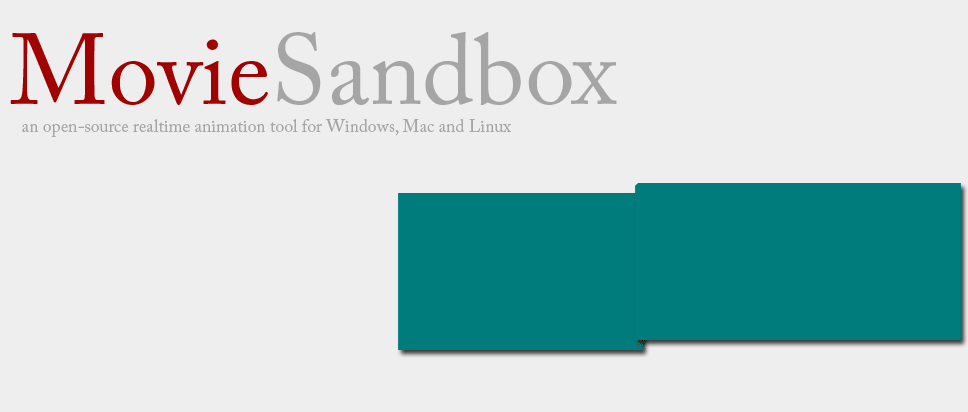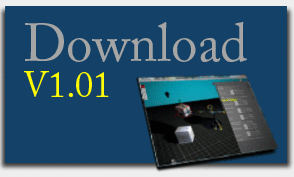Some caveats before I dive in:
I do not have a background in computer programming. I wanted to make movies and ended up creating animation software. I am fortunate enough to have had access to a wide array of different software tools, many of which are mentioned here, that allowed me to create my work. Without high-profile software like Adobe Photoshop or Apple Final Cut Pro, I would have not been able to do what I do today. Everything that follows is not meant as an argument against great software, but as an addition to the concepts that we are used to right now.
I am also very fortunate to have had the support of countless organizations and individuals who took away the pressure of delivering work for clients or working as a freelance designer/animator but instead allowed me to pursue my own research and aesthetics independently of monetary needs. I consider myself very lucky that I had so much time to spend on these things and I am well aware of the luxury that this situation represents.
With that out of the way, I want to present the first of two arguments that represent the core of what drives me to work on this software for the last years and the foreseeable future.
One of them is technological, the other one political (and published at some later point). I am also decorating this post with somewhat unrelated pictures (as a substitute to the diversions usually created by advertisement).
This is going to be a longer post, so you might want to grab a hot beverage of choice.
Let’s start with the technological motivation.

It is important to have a diverse set of tools and approaches that reconsider the methods and workflows of production and 3D pipelines every once in a while. To make strides into new territory that require a rethinking of the basic infrastructure on how we create media digitally.
In terms of 3D modelling, we have seen a move from polygon modelling to NURBS to Sudivision-Surfaces to, more recently, voxel and pseudo-voxel sculpting tools. These tools come out of an infrastructure of professional production software geared towards high profile projects in film, television and video-game development.
They are geared towards users that probably already know the underlying mechanics of 3D modelling from the earlier days and/or have had access to training and information that require a significant time investment. They work on top of already existing knowledge of how 3D software is supposed to work and what you are supposed to do with it. And they are developed by people who dedicate their time solely on furthering the power of small parts of a highly sophisticated workflow of which the end result is cinema quality animation.
The amount of polish and functionality in these tool-sets is staggering, as is their complexity. This usually results in the specialization of labor to a point where the people making the creative decisions are often completely removed from the technical decisions and specifically the actual operation of the software programs used to create digital media artifacts.
In short – it is very hard (not impossible) for a single creative individual to produce animation to a level of quality that is expected by an audience that is familiar with big budget (and huge manpower) animation, not just in cinemas but also every day on television.
A the same time, the advances in 3D animation software have translated well to more general software tools that are affordable for students and universities, and sometimes even individuals. These come in the form of relatively low-cost software that does a little bit of everything, like Maya, 3DStudio Max, Cinema 4D or even Blender, which is not only completely free, but also open source and thus enabling a large community of creative individuals to extend the functionality and tailor it to their specific needs.
While these 3D animation tools are monetarily affordable, the amount of time and energy that is necessary to become proficient in them and translate creative ideas into actual digital movies is still extremely steep. Furthermore, and this is something I will elaborate on more in the political section, the amount of time it takes for a single individual to produce a short animated movie of film-festival quality is still beyond anyone but the most dedicated individuals who actively pursue a life career in 3D animation. I think it is safe to say that this is still true for regular live-action film-making, although the rise of youtube and digital video have significantly altered the situation in that world.
Going back to my earlier statement about diversity and re-thinking production workflows, my main technical motivation for Moviesandbox is to develop a software that allows the transfer of a creative idea to a 3D animated movie with less technical proficiency than that necessary in, say, Blender. It is very important that Blender exists and that there is a viable, high-profile, high-quality Open-Source alternative with an active community that implements the most recent developments in 3D modelling and animation research on top of a tried and tested framework and production workflow. But I feel it is also important to question the very workflow and focus on high-quality, high-manpower, high-dedication animation production that persists to date.
That does not mean that I design for people who are not really into 3D animation, but for people who want to quickly sketch out and produce content that lives in a separate space to the prevailing aesthetic and technical status quo.
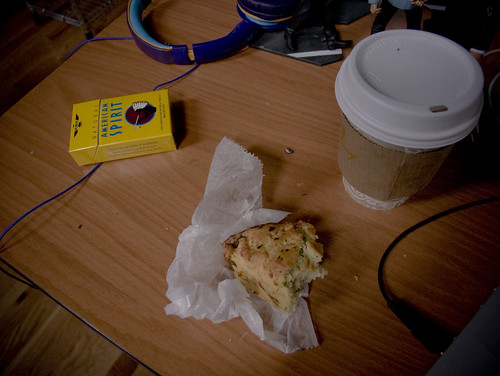
To some extent, this same idea is being pursued by a number of companies, like Reallusion, Moviestorm and more recently, animated-film-making software with a strong internet-tie-in component like Xtranormal, muvizu and others. One major difference to my work is the presence of a business model that charges people for content or relies on the aforementioned tools to create it.
You either have to pay for additional content (like characters for Xtranormal) or use Maya or 3DStudio to create your characters – if the company opens their software enough to allow importing assets at all.
It is a step in the right direction insofar that the workflow has been radically altered to allow quick implementation of ideas. But it is severely limited by the available content or the skills necessary to create it yourself.
What I try to argue for, is the need for creative control and approachable methods of creation to all aspects of the film-making process. So even though my characters lack the polish and technical proficiency of trained 3D modellers and animators, at least they are created and owned by myself and will fit the aesthetic choices that I made for my movie. And the way I created them does not mean that I had to get a degree in computer animation in order to be able to use the tools available to me.
The reason this is so important to me is the fact that I believe that computer animation, just like any other form of animation, works best when trying to create images (and stories) that transcend the real and create a stylized world through which we can transport our ideas. In my opinion, it is the focus on the imaginary and inherently unrealistic that gives power to animated movies, and that generates a need for reduced (or stylized) aesthetics to render these imaginary ideas and make them come to life.
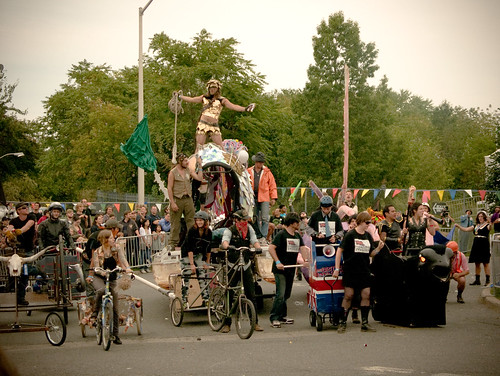
Everybody that has worked on movies – animated or live action – will probably agree that every movie is produced a little bit differently. Herein lies the reason for a lot of the complexity of 3D animation software, as it needs to create a universal tool that allows every possible imaginary image to be synthesized within reasonable amounts of time. That’s quite a bit of pressure! If you are creating a movie consisting of nothing but square blocks, your tool can be a lot simpler – it could even be a game, like Minecraft. If your idea involves dark corridors and hairy spider-monsters in space, it could be geared to just that. Creating software that serves both imaginary filmmakers and provides tailored production tools is pretty tough though. In live-action film-making, as in claymation, puppetry and other non-digital branches of moving image generation, every new project adds a new set of small inventions, project-specific tools and workflow alterations. Some of these inventions will translate into (or even spawn ideas for) your next movie, but a lot of them will just be used for a specific shot in a specific scene.
At the same time, technological advancements in computer processing or image recognition mean that animation that was painstakingly key-framed by hand just a week ago can now be recorded using a 120$ piece of equipment for a video-game console.
Whatever tool you use for your animated movie should ideally allow for improvisation, but also working together with new and often unexpected technology. That also means that you are relying on the tool providers to add a level of complexity with each update that accumulates user requests from a diverse range of projects and problem sets. Growing your one universal tool to a point where it becomes impenetrable for a new user to sift through all the options.
It also means that tool-production companies choose which new research gets into the hands of their users and how to best integrate it into an already existing interface. And that you have to constantly update your software and knowledge in order to make use of “the latest stuff”.
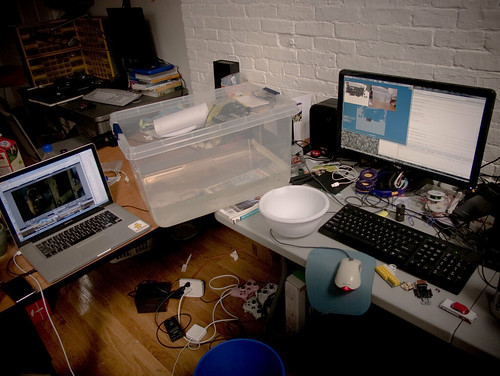
I believe that just like in non-computer generated film-making, the use a diverse set of tools that, by themselves, can be very specific and easy to learn, will allow for a space in which you can improvise and create your very own workflow for your very specific movie. And hopefully, at some point, we will be able to create our own tools for our own specific needs without relying on (or paying money for) other people to implement them for us.
The moment we live in a world where every citizen is as proficient in computer programming as they are in their native language, we wouldn’t need to worry about this problem so much. Instead this text would be about how we need open standards to make things talk to each other. In the programming-literate world, this is an important discussion, but that is, sadly, a rather small portion of the general population.
So what about the people that are not able to create their own code to add tools as they need them?
As a start, moving the problem away from the virtual world and into the physical world would help immensely. The underlying idea is that we are all very good at improvising in the physical world. Using books as camera stands, using a spoon as a fork, using chairs to make us reach things, etc.
A robust framework for sensing information in the real world would allow the creation of physical tools independently of software implementations, and thus allow a far greater amount of improvisation for a far greater amount of people than any scripting language would offer. Using household materials and sensing equipment with a complexity that is not beyond a 5 minute tutorial would allow completely new ways in which we can bring things to life in the computer. Projects like arduino and the Kinect are much more than just fancy new tools in the hands of skilled programmers. They can be a bridge from the real world into the virtual. they can allow for improvisation in a realm that we are all very familiar with – the physical space around us.
I can build my movie-set using the Kinect instead of using 3D modelling software. I can scan my play-doh sculpted characters using milk and a regular webcam. I can animate a talking head using an actual sock puppet. These are not tools themselves, they are bridges that balance the film-making process towards physical space and invite the user into the tool creation and experimentation process itself.
Moviesandbox is my proposal for a different paradigm in animation. I am well aware of the fact that the work of a single part-time untrained programmer will not alter the way in which we create animated content, but I hope it can be an incentive for others to rethink their structures and approaches.
